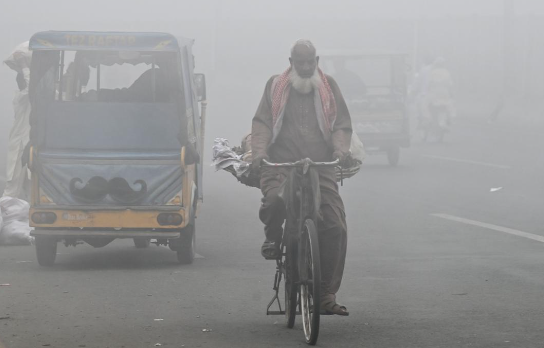Air Pollution Crisis in Punjab, Pakistan
Severe air pollution has emerged as a critical issue in Punjab, Pakistan. The situation has escalated dramatically, affecting millions of children. The United Nations Children’s Fund (UNICEF) has brought to light the health risks faced by these vulnerable groups. Lahore, the cultural capital, is severely impacted. Toxic smog has enveloped the city and surrounding districts. This phenomenon is now referred to as a “fifth season.”
Current Health Risks
Over 11 million children are at risk due to deteriorating air quality. Reports indicate that more than 40,000 individuals have sought treatment for respiratory problems. Hospitals in Lahore are overwhelmed, with 900 admissions reported in a single day. Children under five are particularly vulnerable. Before this crisis, air pollution was linked to 12% of deaths in this age group.
Record Air Quality Index Levels
Lahore has recorded alarming Air Quality Index (AQI) levels. The AQI reached an unprecedented 1045. Multan, another affected city, reported AQI readings above 800. Multan’s levels soared past 2,000, a shocking figure for residents. An AQI above 300 is deemed hazardous. The city consistently ranks among the world’s most polluted.
Causes of Pollution
The pollution crisis stems from various sources. Low-grade fuel emissions from factories and vehicles contribute. Agricultural stubble burning exacerbates the situation each winter. Cool temperatures and stagnant winds trap pollutants close to the ground. This combination creates a toxic environment, particularly in urban areas.
Government Response
In response to the crisis, the Punjab government has closed educational institutions and public spaces. Parks and zoos will remain closed until November 17. Authorities are urging residents to limit travel. Face masks have been mandated, but compliance is low. The government is also exploring artificial rainfall as a potential solution.
The World Health Organisation (WHO) warns of severe health consequences from air pollution. Risks include strokes, heart disease, lung cancer, and respiratory diseases. Children, babies, and the elderly are especially at risk. The long-term impact of this year’s pollution levels is yet to be fully assessed.
Community Awareness and Action
Community awareness about the dangers of air pollution is crucial. Public health campaigns are essential to educate residents. Individuals are encouraged to monitor air quality and limit outdoor activities during peak pollution times. Collective action can help mitigate the effects of this environmental crisis.
The future of air quality in Punjab remains uncertain. Continued efforts are necessary to address pollution sources. Long-term strategies will be essential for sustainable improvement. The health of millions, especially children, depends on immediate and effective action.
Important Facts for Exams:
- Fifth Season – The term “fifth season” describes the severe air pollution in Punjab. It signifies a new environmental crisis affecting health and daily life in the region.
- AQI – The Air Quality Index (AQI) measures air pollution levels. An AQI above 300 is hazardous. Lahore’s AQI reached an unprecedented 1045 indicating extreme health risks.
- Abdullah Fadil – Abdullah Fadil is UNICEF’s representative in Pakistan. He emphasises the urgent need to reduce air pollution. His statements highlight the severe impact on children’s health.
Month: Current Affairs - November, 2024
Category: Environment Current Affairs






